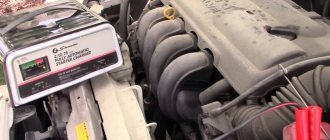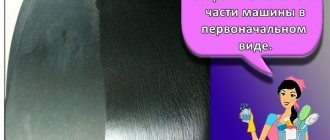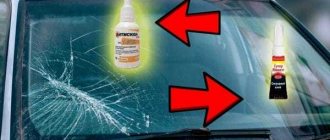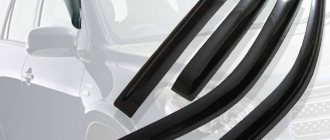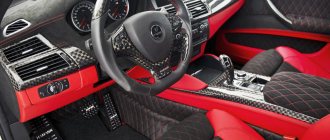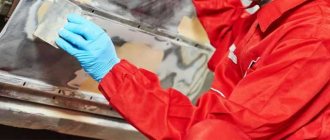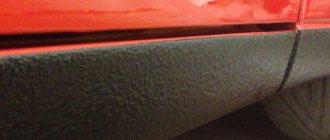How to polish headlights? - a question that every owner of a new car asks himself. Cloudy or yellowed headlights not only negatively affect your vehicle's curb appeal, but also reduce driving safety. If your headlights appear dim on the inner surface, this indicates moisture is leaking through the seal. In this case, you need to completely disassemble the headlight; this requires special tools and experience.
As a rule, headlight lenses suffer from the outside, as it is influenced by external factors (sandblasting, weather conditions). In this case, there is no need to disassemble the headlight, and all actions can be performed on the car.
Deciding on the approach
Unplanned cleaning of the insides can overtake any car owner.
After all, few people are immune from shortcomings in the factory optics ventilation scheme, as a result of which they will have to get rid of fogging from the headlights and remove the already accumulated condensate. Traces from the drops will inevitably remain, which means the spectrum of the glow will no longer be the same. It would be more logical to remove the glass, wash it properly and put it back in place. The practical side of the issue causes rejection. Removing the front panel and then re-seating it with sealant is quite a task. For comparison: many people prefer to buy a used headlight, wash it inside and polish it, rather than remove the glass and fix any significant defect in the existing optics.
It's easier to wash from the inside, but how? There are two technologies used in this regard:
- Classic. Fare is given a bath - a cleaning solution is poured inside, they wait, drain, wash out the remains and dry for a long time.
- Magnetic. A cloth is placed inside with a magnet wrapped in it. There is also a magnet on the outer surface. One pole attracts the other and the device located inside the product begins to slide along the glass, ensuring proper cleaning.
Selection of detergent composition
The aggressive components of most products can damage the surface of the headlight and the reflector
When choosing, it is important to pay attention to the composition, as you can purchase a low-quality product without a degreaser
Distilled water does not leave streaks on the surface of transparent plastic and reflector, but is not able to wash away stagnant dust or haze from burning lamps.
How to wash internal headlight parts:
- soap composition;
- dishwashing liquid;
- shower gel.
Cosmetic micellar water to remove makeup will also help to wash the headlight from the inside.
When choosing, you should pay attention to the absence of alcohol, which can easily wash off the coating and render the optics unusable.
How to wash the inside of a headlight using the classic method
In its pure form, classic involves non-contact washing of the insides with a cleaning solution. The method is excellent for headlights of budget-class cars, where a minimum of electronics is used for optics. Dismantle the headlight, remove all lamps, lenses and valves of the ventilation system and that’s it - the product is ready for washing.
The cleaning solution is prepared manually. There is no universal recipe; some use glass cleaner, some use dishwashing detergent, and some even prefer household products of a more aggressive class. The safest thing to do is use a glass cleaner, not necessarily a car one.
You should purchase at the rate of one bottle of detergent per headlight.
Container volume – 0.8-1 liter. Let us repeat that glass cleaner is not used in its pure form here: you should make a solution - 60% detergent, the remaining 40% tap water. So, the headlight is disassembled, the cleaning solution is ready - let's start cleaning:
- Rinse the insides with running water. This is especially important if there is sand or other abrasives in the housing. It must be washed, otherwise when rinsing with a soapy mixture, grains of sand will scratch the inner surface of the glass.
- Place the optics in the container. Use a plastic bowl to avoid damaging the front of the product.
- Pour the cleaning solution inside the headlight so that the liquid completely covers the glass when the part lies face down.
- Leave the headlights in this position for 10-15 minutes so that serious dirt has time to soak off.
- Rinse the insides with a cleaning solution. Pour the poured chemical from one corner to another (along the glass), shaking the headlight periodically.
- Drain the detergent. The most convenient way to do this is through the ventilation holes, which allow you to remove up to 98% of the contents poured inside the product.
- Rinse the insides with running water. Do not save water; not a single trace of detergent should remain.
- Rinse the headlights with distilled water. This will remove drops of tap water that leave marks after drying. The number of repetitions must be at least two.
- Dry. At the first stage, a household hair dryer is usually used to dry hair. Barely warm air is directed into the headlight through the hole for replacing lamps and flows inside for about 20 minutes, with pauses so that the product does not overheat. At the second stage, natural drying is carried out. The parts are placed in the sun, and to speed up the result, a bag of silica gel is placed inside, covering the holes with lids.
Replacing lenses
Our company’s specialists work with cars of all brands and replace halogen, xenon and LED lenses. Below are approximate prices for work without taking into account the cost of equipment:
| Name of works | Cost, rubles |
| Replacing halogen bi-xenon lenses without disassembling the headlight | From 2,000 |
| Replacing halogen and xenon lenses with headlight disassembly using thermoplastic sealant | From 6 000 |
| Replacing halogen and xenon lenses with headlight disassembly using glass sealant | From 8 000 |
| Replacing LED lenses on a headlight with thermoplastic sealant | From 8 000 |
| Replacing LED lenses on a headlight with glass sealant | From 10 000 |
The cost of services will increase if additional work is required, for example, removing glass sealant to disassemble the headlight (in some cars, the glass is sealed with a non-temperature sealant).
The duration of the work depends on many factors: on the make of the car, on interference in the lighting circuit of the driver or other technician, on the need for additional work - changing the inside of the headlight, making special transition frames, etc.
Check the cost and time of work with our specialists.
We provide a 1-year guarantee for all types of work performed.
How to clean the inside of a headlight without disassembling it? Magnet to the rescue!
The complex design of the optics, oddly enough, is not the main obstacle to cleaning it with Mister Muscle. The main disadvantage of the first method is that no one is immune from damage to the reflector. Under a certain set of circumstances, chrome literally “peels” off the plastic, causing the product to lose its former aperture ratio. The puzzling thing is that this can happen not even through the fault of the detergent: there have been precedents when chrome peeled off from the slightest exposure to ordinary tap water. Therefore, if you have not found experienced confirmation of washing the headlights of a certain car on the vastness of forums and social networks, do not take risks.
Use an alternative. Cleaning headlights from the inside with a magnet requires a minimum of disassembling the product, does not harm the reflector, does not require long-term drying and is relevant for almost any car. The only thing, keep in mind that the magnet inserted inside the headlight must be securely fastened, otherwise complete disassembly of the product will become inevitable. We will now tell you how to do this.
First you need to prepare the components:
- Microfiber towel.
- Two magnets. There is no specific requirement for these components: who takes magnets from the refrigerator, who buys neodymium products... The only note is that do not buy large magnets - 12x3 or 15x4 mm tablets with an attractive force of up to 3 kg are quite enough.
- Glass cleaner or micellar water from a woman's cosmetic bag.
- Wire.
- Insulating tape.
- Scissors.
The essence of the technique is that one magnet is inserted inside the headlight, the second is located outside the product, right on the glass. All that remains is to connect the two magnets, and then smoothly move what is located outside along the glass, periodically wetting the rag in the cleaning liquid.
The main difficulty is preparing the internal magnet for work. Let us repeat that the main condition is that the product should not remain uncontrolled inside the optical device. For reliable fixation, a magnet wrapped in microfiber is attached to a wire:
- Strip the end of the wire from insulation.
- Wrap the magnet in microfiber and place a bare piece of wire on the side.
- Wrap the structure with electrical tape, leaving a small piece of bare wire and a piece of microfiber that will be in contact with the glass.
- Bend the open end of the wire and additionally wrap it with insulation. This will reduce the risk of wire detachment from the microfiber to zero.
The opposite magnet is similarly placed in a rag, and the end, for convenience, is wrapped with insulation. In general, on the vast forums there are various systems for attaching a magnet placed inside the headlight. For example, sew microfiber thread with a magnet wrapped inside, etc. We have provided the most convenient method of fixation. The practicality is that the wire can be bent to direct the magnet to the desired location on the optical device.
Our works:
Headlight repair: installing angel eyes
Headlight repair: installing angel eyes
Restoration of headlight glasses
Restoration of headlight glasses
Causes
It is much more important to understand why oil is flowing through the breather in the engine, since this will allow us to establish the cause and eliminate it. On your own, or with the help of specialists, is no longer of fundamental importance.
It is interesting that some reasons may not be directly related to the ventilation system at all.
Among the main causes of oil in the breather are the following:
- Severely worn piston rings and piston rings. This leads to the fact that a large volume of gases enters the crankcase of the power unit, and standard ventilation does not have time to cope with them. As a result, increased pressure in the internal combustion engine and squeezing out oil through the breathing valve.
- The oil separator drain channel has become clogged over time. As a result, the separated oil has no choice but to mix with the gases passing by it.
- Problems with the air filter. Or rather its pollution. When operating, the motor requires a large volume of air. If the filter becomes clogged, the engine senses a lack of air and begins to suck it in from other available sources. This is basically a ventilation system.
- Excessive oil volume in the system. A common mistake made by beginners who change the oil themselves for the first time and fill in more than required. The excess ends up in the ventilation.
- Valve jamming. The breathing valve itself, that is, the breather, may jam. It ceases to perform its functions fully. Hence the oil.
- Worn timing belt or valve burnout. Because of this, gas from the crankcase may end up in the space above the valve. Then it enters the crankcase, the pressure increases, and the oil is squeezed out.
As you can see, you shouldn’t immediately blame the breather for all the troubles.
Step-by-step instruction
Over time, car headlights fade and become dirty due to external factors.
Road deposits, dust, dirt, and insects gradually create an impenetrable film on the surface, which prevents the headlights from performing their main function. In order not to take risks once again by driving onto a road with poor lighting, you need to regularly clean your headlights. You can save at least RUB 1,000 by cleaning your headlights yourself.
In this instruction we will tell you the best way to do this: wash and polish the headlights!
Self-recovery methods
To get to the reflector, the headlight removed from the car must be disassembled. The first option involves repeatedly passing the hot air of a hair dryer over the seam. The second option involves leaving the headlight in an oven preheated to 100°C for 20 minutes. After opening, all parts are cleaned of sealant residues, washed without using alcohol-containing liquids and dried.
Using metallic tape
Let's start with how to restore the reflector on a headlight using tape foil. All you need is metallized tape, purchased at a hardware store for about 30 rubles. Its adhesive base copes well with high and low temperatures, and the aluminum film is very wear-resistant.
In order to obtain a smooth surface with a minimum of seams after gluing the tape on the reflector, first, pieces of the most suitable shape are formed from several strips. Then remove the protective film and carefully stick it on. The whole procedure takes about half an hour.
Advantages of the method: durability, low cost, ease of implementation.
Disadvantages: when gluing, irregularities and seams remain, which impair the properties of the reflector.
Using metal foil
Aluminum foil is highly reflective, which allows it to be used in the restoration of headlight reflectors. You will also need some epoxy resin. To maintain a perfectly smooth surface of the foil, the entire pattern is made from plain paper. Then the parts are duplicated from aluminum sheet, a thin layer of resin is applied to the reflector and glued, removing excess resin.
Advantages: withstands any temperature changes.
Disadvantages: being between the metal foil and the plastic base, epoxy glue lacks air and takes a very long time to dry. It is almost impossible to remove dried glue. Therefore, such a reflector is not suitable for repeated restoration. With the advent of tape foil, this method is practically not used.
Using chrome paint
Headlight reflector repair using chrome paint is the most popular. No need to cut and glue anything. Paint is sprayed onto the degreased surface of the reflector from a can of white chrome until a uniform, uniform layer is obtained. After painting, the headlight is dried according to the instructions on the can.
Benefits: Provides a smooth surface. You can even spray paint onto metal tape, thus increasing the reflective effect.
Disadvantages: does not tolerate high temperatures. You should try to find heat-resistant chrome paint.
Using mirror film
No less effective is the restoration of the reflector by applying a metallized self-adhesive film of the Oracal brand. Films from the Oracal 351 and Oracal 352 series can withstand temperature changes from -40 to +120°C and, according to the manufacturer, can be used outdoors for two years without deterioration in performance. Since the headlight is a hermetically sealed space, the service life of the self-adhesive film increases.
It is necessary to make templates from paper or ordinary tape that exactly replicate the shape of the reflector. Then cut out the polyester film of a similar shape. Using a hairdryer, glue it onto the prepared surface of the reflector, smoothing it out and preventing the appearance of bubbles. The joints and edges can be additionally treated with chrome paint.
Advantages: reliable manufacturer, excellent reflective effect.
Disadvantages: the price of 1 m2 starts from $5.
As you can see, restoring headlight reflectors is a simple procedure and quite feasible in a garage. Considering the fact that auto repair shops charge an order of magnitude more money for similar work, it always makes sense to try to return the headlight to its previous brightness with your own hands using one of the proposed methods.
DIY headlight polishing process
The process of polishing headlights using toothpaste can be divided into several stages:
- Protect metal parts and rubber seals from exposure to abrasive agents;
- Preliminary cleaning of headlights from dust and dirt.
- Apply toothpaste to the surface and rub with a brush, felt or medium-hard towel. You need to do this with vigorous circular movements until the scratches are completely removed. If necessary, add toothpaste or goyim paste. By the way, it is more efficient to polish using an electric drill, which is equipped with special attachments. The speed should be maximum.
- Cleaning the polished surface of glass from dental residues.
The first stage of polishing glass headlights is to prepare the field of activity. To do this, you first need to carefully tape all metal surfaces and rubber seals with tape to prevent them from being damaged during polishing. Then clean the surface from dirt, grease, oils and other things. It is advisable to use a degreaser, soap solution or washing powder.
Technology for polishing headlights using toothpaste
After completing the preparatory work, you can proceed to the main process of polishing glass headlights. This is done in this way: the paste is applied either to the surface of the headlight itself or to a brush (felt or towel).
Polishing is carried out with very vigorous and fast circular movements. It is best to use special tools, such as an electric drill, hammer drill or grinder. To do this, they are equipped with special grinding wheels, onto which goi paste or regular toothpaste is applied; you can use a special polish based on diamond dust
When processing glass headlights, as well as plastic ones, it is important to prevent the surface from overheating. Since this can lead to cracks or the plastic may “float” at high temperatures. To prevent this, you need to control the degree of heating of the glass surface; this is done by hand - the glass should not be very hot. Therefore, you need to take short breaks all the time.
Therefore, you need to take short breaks all the time.
If you have certain skills and use abrasive pastes with different abrasiveness ratings (from 400 to 1000), you can achieve a smooth change in the haze of the glass.
Methanol for electronics and polycarbonate parts
This product has gained popularity due to its rapid evaporation, after which no traces remain. The advantages of methanol also include safety in relation to the internal components of the headlight.
It is important to remember that care must be taken when working with this toxic and flammable substance.
To begin with, dismantle the headlights, remove the light bulbs, and then pour in 200 ml of the substance. The headlight is turned over and rocked from side to side for several minutes. The liquid is poured out and the procedure is repeated several more times. The remains are dried with a hair dryer.
Cleaning the headlights yourself is not difficult, the main thing is to follow some rules: do not use acetone for plastic, and alcohol for the reflector.
